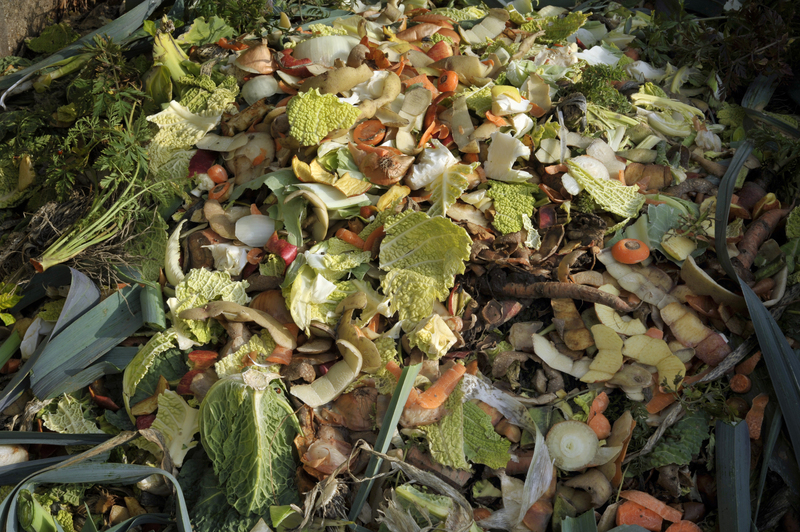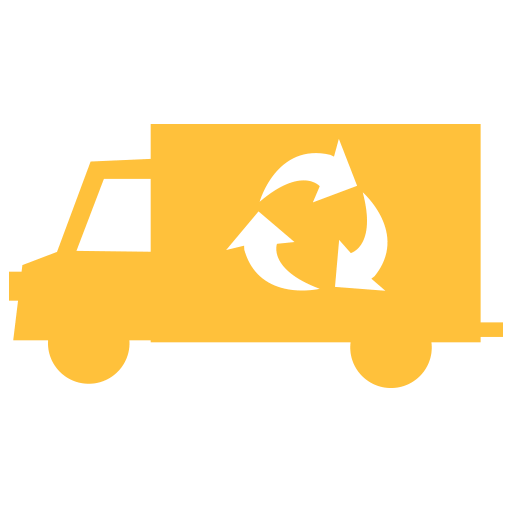Innovative Approaches to Stop Microplastic Pollution
Posted on 14/10/2025
Innovative Approaches to Stop Microplastic Pollution
Microplastic contamination is a growing global threat, silently infiltrating our oceans, rivers, soils, and even the air we breathe. As microplastic pollution becomes increasingly recognized as a major environmental and public health concern, scientists, industries, and governments are searching for innovative solutions to stop, reduce, and prevent further microplastic release into our ecosystems.
This comprehensive article delves into the latest innovative approaches to combat microplastic pollution. From advanced filtration technologies and biodegradable alternatives to policy reforms and community action, discover how humanity is rising to the challenge of this persistent pollutant.
Understanding Microplastic Pollution
Before exploring solutions, it is vital to understand what microplastics are and why they pose such a significant threat.
What Are Microplastics?
Microplastics are tiny plastic fragments measuring less than 5 millimeters in length. They can stem from the breakdown of larger plastic debris or be intentionally manufactured for use in everyday products like cosmetics, toothpaste, and cleaning agents.
- Primary microplastics: Manufactured as microbeads in personal care items.
- Secondary microplastics: Result from the degradation of larger plastics such as bottles and bags.
Why Are Microplastics a Problem?
Microplastics are difficult to remove from the environment due to their minuscule size. They are easily ingested by marine and terrestrial organisms, entering the food chain and subsequently affecting human health. Moreover, microplastics have been detected in drinking water, table salt, and even the air.
Stopping microplastic pollution is imperative for safeguarding biodiversity, food security, and public health.

Advanced Filtration and Removal Technologies
Technological innovation is at the forefront of efforts to mitigate microplastic pollution. Engineers and scientists have developed various cutting-edge solutions to remove microplastics before they enter the wider environment.
Upgrades in Wastewater Treatment Plants
- Membrane bioreactors: These advanced filtration systems can efficiently capture microplastic particles during wastewater treatment. By employing ultrafiltration membranes, these systems act as barriers to even the smallest microplastic fragments.
- Dissolved air flotation (DAF): This technique uses tiny air bubbles to float suspended microplastics to the surface, where they can be removed easily.
- Sand and granular activated carbon filtration: These methods further trap microplastics that may pass through traditional treatment processes.
Nanotechnologies for Microplastic Capture
Nanomaterials and magnetic nanoparticles are being explored for their ability to bind or attract microplastic pollutants. For example:
- Iron oxide nanoparticles can attach to microplastics, allowing them to be removed magnetically from water bodies.
- Graphene oxide membranes offer high selectivity for plastic particles, enhancing filtration efficiency.
Innovative Ocean Cleanup Initiatives
Projects like The Ocean Cleanup are pioneering large-scale removal of plastic debris and microplastics from the oceans. Their systems utilize drifting barriers and collection platforms that target floating waste in oceans and rivers. Some new initiatives also use autonomous drones and robots to detect and gather microplastics in hard-to-reach aquatic zones.
Biodegradable and Alternative Materials
Preventing microplastic generation at its source is one of the most effective long-term strategies. Companies and researchers are developing sustainable alternatives to conventional plastics that break down safely in nature.
Bioplastics and Natural Polymers
- Polylactic acid (PLA): Derived from corn or sugarcane, PLA is used for bottles, bags, and food packaging. It is compostable in industrial settings.
- Starch-based plastics: Blended with biodegradable polymers, these materials serve as packaging films, loose-fill, and disposable cutlery.
- Chitosan and cellulose composites: Extracted from shrimp shells and plants, these offer biodegradable options with similar functionalities as plastics.
Innovative Textile Manufacturing
Fashion and textile industries are significant sources of microfiber pollution. New approaches include:
- Developing natural fibers (e.g., organic cotton, hemp, bamboo).
- Improving yarn construction and textile finishing to reduce shedding.
- Implementing coatings that limit fiber release during washing.
Eco-Friendly Microbeads Alternatives
Many personal care products once contained plastic microbeads. Alternatives now include:
- Crushed nutshells, salt, or sugar as natural exfoliants.
- Jojoba beads and silica seeds for gentle scrubbing.
Policy, Regulation, and Extended Producer Responsibility
Effective legislation and corporate responsibility play critical roles in stopping microplastic pollution at the source. Governments and organizations are implementing new policies to reduce the plastic burden and promote accountability.
Microbead Bans and Plastics Regulations
- Microbead bans: Several countries have prohibited the manufacture and sale of microbeads in personal care products, significantly cutting one source of microplastics.
- Single-use plastics regulations: Banning or limiting single-use plastic items drives industry shifts towards reusable or biodegradable alternatives.
Extended Producer Responsibility (EPR)
EPR policies hold manufacturers responsible for the entire life cycle of plastic products, from design to disposal. This approach incentivizes eco-friendly packaging, improved product design, and support for recycling initiatives.
Global and Regional Agreements
- UN Environment Assembly negotiations on a global plastics treaty aim to set legally binding frameworks for plastic production and waste management.
- EU Directive on Single-Use Plastics restricts the top 10 most commonly found single-use plastic items on European beaches.
- International cooperation for monitoring and research shares knowledge and data to advance microplastic mitigation worldwide.
Community Initiatives and Public Awareness
Grassroots actions and public engagement are essential for driving behavioral change and supporting innovative efforts to end microplastic pollution.
Educational Campaigns
- Schools, universities, and NGOs organize workshops to raise awareness about the dangers of microplastics and how daily choices can make a difference.
- Social media initiatives spread crucial messages about responsible plastic use and proper disposal.
Citizen Science Monitoring
Involving citizens in data collection helps researchers map microplastic pollution in local water bodies and track pollution trends over time. Smartphone apps and collaborative platforms make it easier than ever for the public to contribute to scientific research.
Cleanup Drives and Waste Reduction Challenges
- Beach and river cleanups directly remove plastic debris before it breaks down into microplastics.
- Community zero-waste challenges and plastic-free pledges encourage individuals to minimize plastic usage and advocate for policy changes.
Innovative Industry Solutions
Industries are responding to consumer demand for less polluting products by investing in new processes, materials, and business models.
Advanced Washing Machine Filtration
- Appliance manufacturers are now offering microfiber filters for washing machines, which capture synthetic fibers released during the laundry process.
- Retrofitting existing machines and mandating filters in new units are becoming common regulatory approaches in regions such as France and California.
Closed-Loop Manufacturing and Reuse
- Circular economy models that emphasize product reuse, repair, and recycling minimize the need for virgin plastics and reduce overall waste.
- Innovative packaging return systems, such as refillable containers, further cut down on single-use plastic production and subsequent microplastic generation.
Innovative Packaging Solutions
- Designing packaging from single-material sources to enable easier recycling.
- Employing edible or water-soluble packaging for select products.
- Utilizing post-consumer recycled content in product packaging.

Future Directions and Promising Research
The fight against microplastic contamination is a dynamic field, with exciting research and solutions on the horizon. Here are some promising developments:
Enzyme-Based Plastic Degradation
Researchers have discovered enzymes that can break down plastics at the molecular level. Genetic engineering and bioaugmentation could allow these enzymes to be deployed in landfills, industrial facilities, or even wastewater treatment plants to efficiently degrade microplastics.
Innovative Filters for Stormwater Management
- Specialist road and gully filters capture tire wear particles and microplastics before they enter sewage systems and rivers.
- Biofiltration systems (constructed wetlands, vegetative swales) offer nature-based solutions for trapping microplastics in stormwater runoff.
Multi-Stakeholder Partnerships
- Collaboration between governments, universities, NGOs, and industry accelerates the development and implementation of innovative solutions to microplastic pollution.
- Joint initiatives can facilitate global data sharing, capacity building, and harmonization of policies.
Conclusion: Toward a Microplastic-Free Future
Ending microplastic pollution requires bold, multifaceted action. Through the integration of technology, sustainable materials, policy innovation, and community engagement, there is hope for a cleaner, safer, and more resilient future.
Everyone can play an important role in reducing microplastic pollution, from opting for eco-friendly products and supporting policies that restrict harmful plastics, to participating in local cleanups and educating others.
Advancements in science and growing global awareness signal a turning point in our relationship with plastics. By embracing innovative approaches to stop microplastic pollution, we can protect our planet's ecosystems, safeguard public health, and uphold our responsibility to future generations.
Key Takeaways:
- Advanced filtration in wastewater treatment is crucial for capturing microplastics.
- Sustainable materials and biodegradable plastics minimize microplastic creation at the source.
- Policy and regulations spur industry accountability and public behavioral change.
- Education and community action empower individuals to make meaningful impacts.
- Ongoing research and global collaboration are vital for achieving a microplastic-free world.
Together, let's support and champion innovative approaches to conquer microplastic pollution!

 020 3409 1874
020 3409 1874 020 3409 1874
020 3409 1874




 House clearance
House clearance Rubbish collection
Rubbish collection





